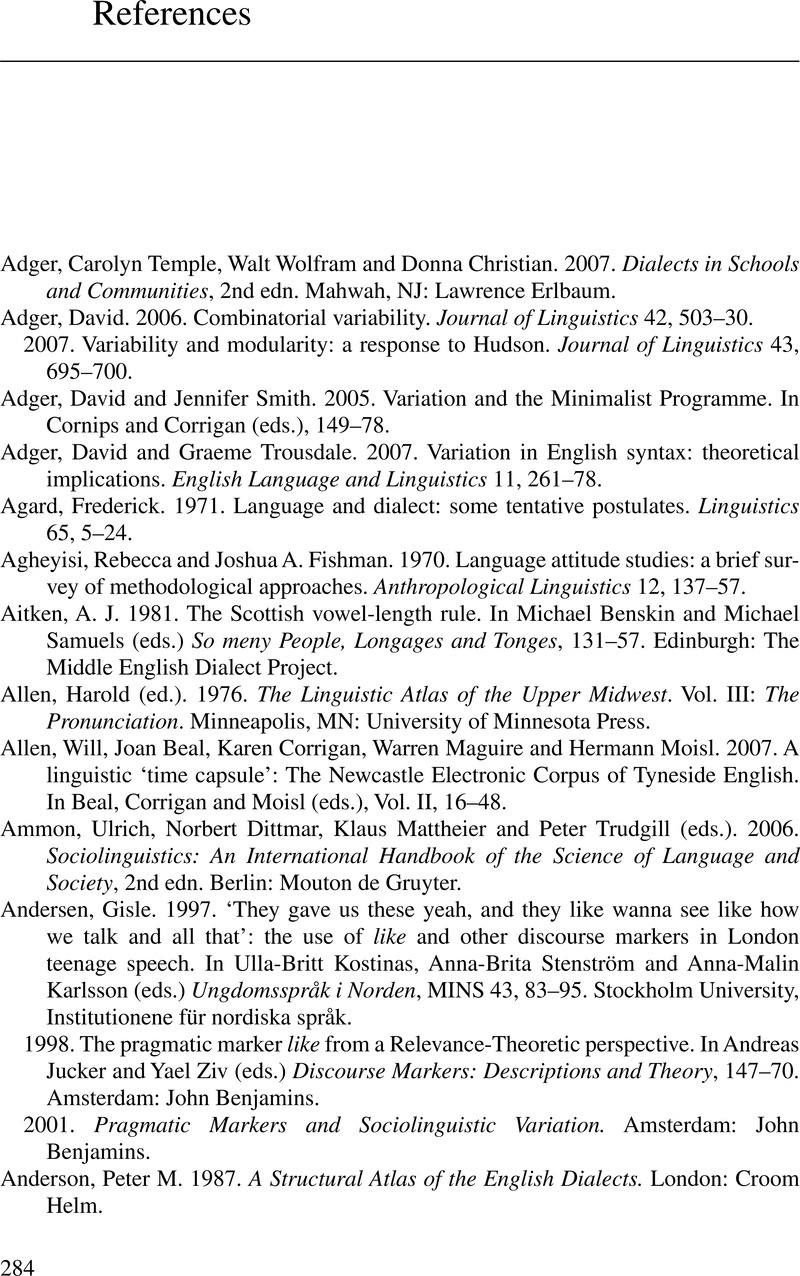Book contents
- Frontmatter
- Contents
- List of figures
- List of tables
- List of contributors
- List of abbreviations
- Introduction. Analysing variation in English: what we know, what we don't, and why it matters
- Part I Investigating variation in English: how do we know what we know?
- Part II Why does it matter? Variation and other fields
- Notes
- References
- Index
- References
References
Published online by Cambridge University Press: 03 May 2011
- Frontmatter
- Contents
- List of figures
- List of tables
- List of contributors
- List of abbreviations
- Introduction. Analysing variation in English: what we know, what we don't, and why it matters
- Part I Investigating variation in English: how do we know what we know?
- Part II Why does it matter? Variation and other fields
- Notes
- References
- Index
- References
Summary

- Type
- Chapter
- Information
- Analysing Variation in English , pp. 284 - 322Publisher: Cambridge University PressPrint publication year: 2011

